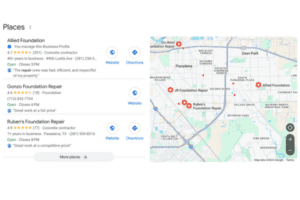Great content goes beyond the trendy phrase; “Content is king,” and actually turns strategic words into something awesome for your clients to engage with while giving your company some ROI. Although there are many different types of blog content, quality writing makes up the brunt of a great corporate blog. In this article our experts at a top marketing firm will take you through a few steps on producing high quality written content for your company’s blog.
Step 1 – Why are you Blogging?
Start by identifying your blog’s target audience and then answer this question: “Why would they subscribe to my blog?” Your intention is to draft a few ideas about what purpose this blog will serve to its readers – remember, online mediums give your audience furious clicking power. Start here:
- What are the general demographics of your audience?
- Who or what kind of things influence them?
- What are the basic content needs of your audience?
- What kind of questions would your audience type into a search engine?
Step 2 – Ready, Set, Research!
High quality blog content is always well researched and supported. Now that you have an idea about what your readers would possibly want to read about, take some time to flesh it out by:
- Defining and developing key topics – consider posts that could fall under the same category and note the relative finer details.
- Go to the experts – identify credible content that has already been written and start to form the skeleton of your content.
- Make it yours – now it’s time to find the gaps between what has been said and what you can add to or comment on. Quality content is both handy and unique, so don’t be afraid to curate information in your brand’s voice.
Step 3 – Write for the Web
Thousands of brands, even many United States marketing firms, make the mistake of blogging in a traditional corporate or academic manner. We need to understand that blogging is different and it comes with its own set of best practices. Here’s a quick summary:
- Be credible and qualify yourself to create trust.
- Write unbiased, non-promotional content too.
- Cite facts as much as possible.
- Link to other industry experts.
- Don’t cram your posts with keywords – you’ll do well to write for humans to stay in Google’s good books.
Step 4 – Make Your Content Actionable and Scannable
People often use online information to quickly solve problems or fulfill particular needs, so blog content needs to account for this in both content and layout. Readers want actionable content so ensure that you’re giving them well-researched info that contains practical tips. Your readers should be able to do something with the content you’re feeding them. They should also be able to arrive at the action after a quick scan through your post. Here are some pointers:
- Make use of short, fluff-free paragraphs.
- Use call to action phrases.
- Highlight your main points with sub headings.
- Use bullets, lists and step-by-step how to guides where possible.
- Use appropriate images to give your readers an ‘eye break’.
Step 5 – Revise Every Post
While blogging has an immediate feel to it, corporate blogging doesn’t often allow for this indulgence. Of course you can always go back and edit your posts, but you should ideally apply the usual proofreading and grammar standards that you would for traditional media. An internal hallway test wouldn’t hurt either.
The business blogosphere is not as well-charted as many think, but following the best practices for quality content and adding your own flare, will serve your brand well.















